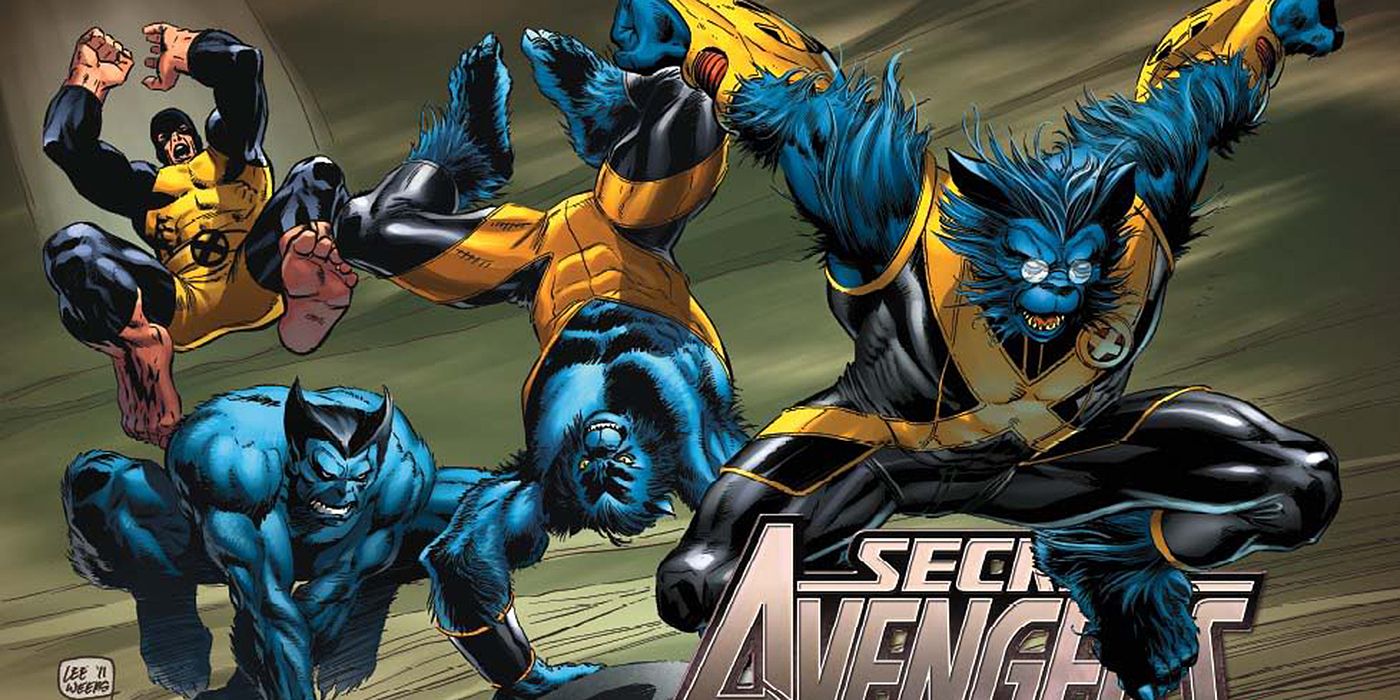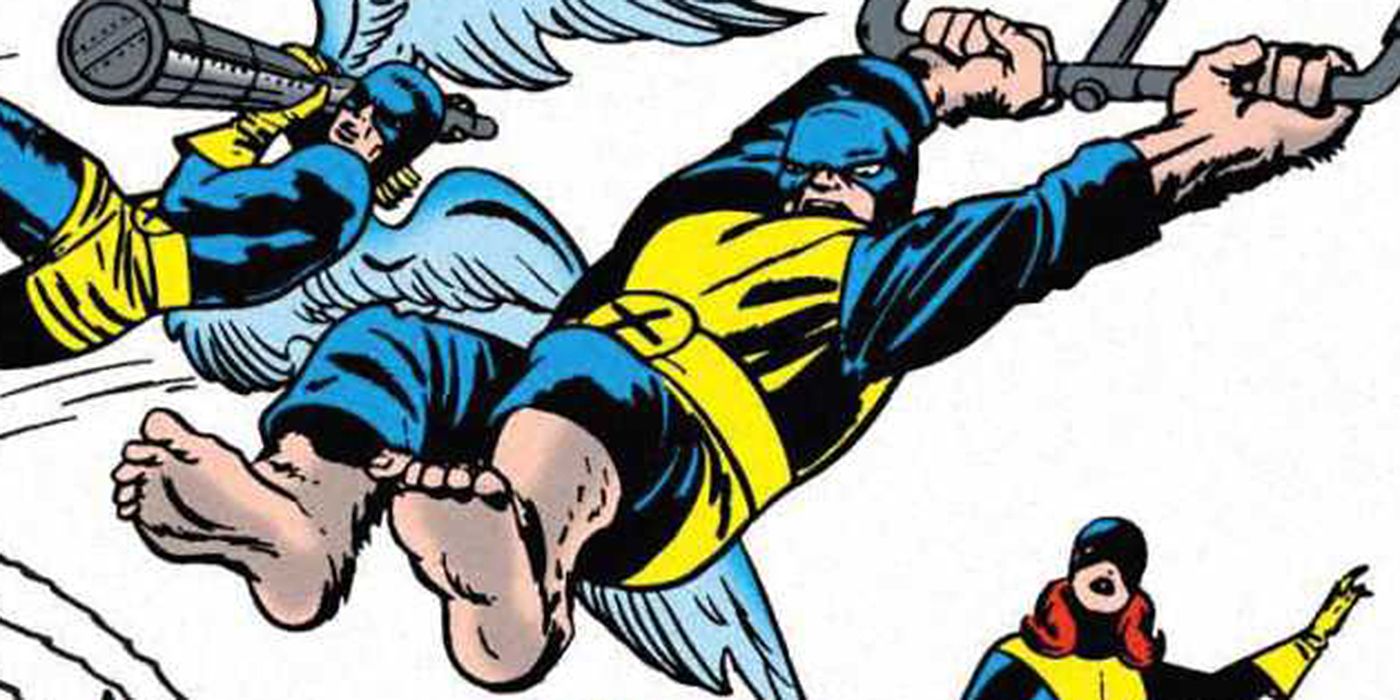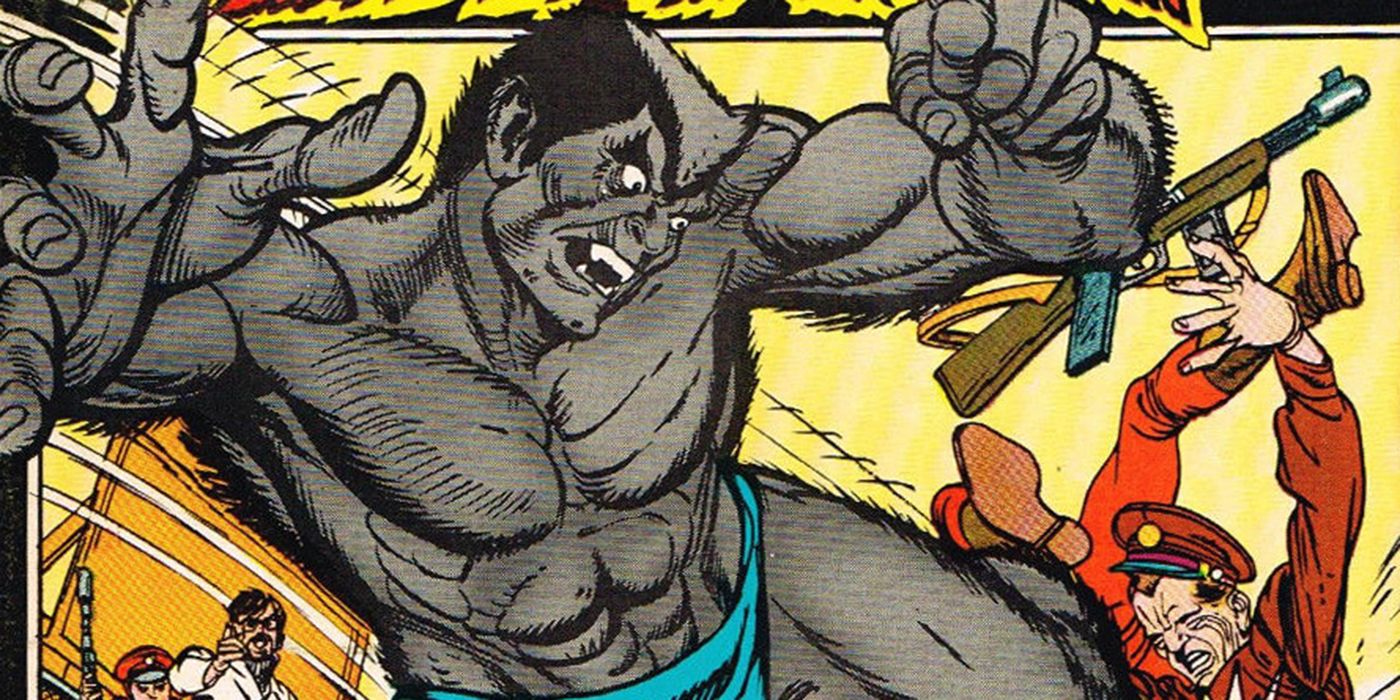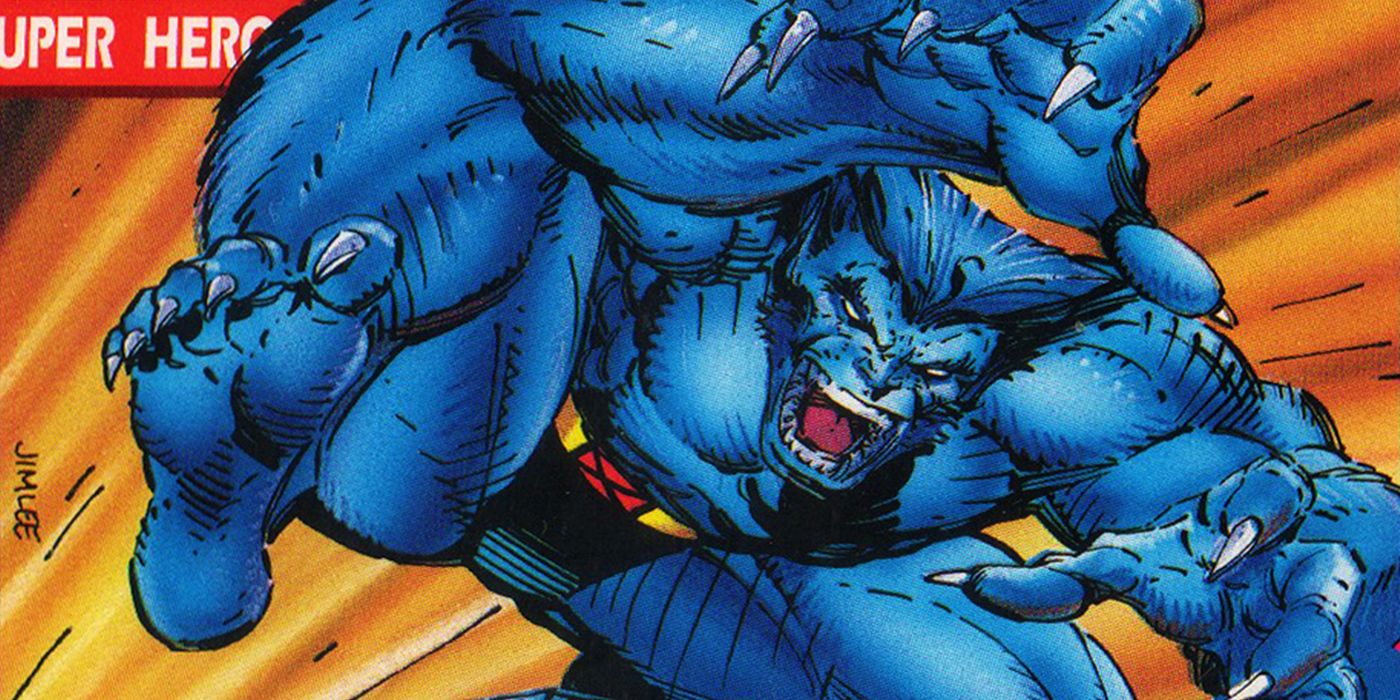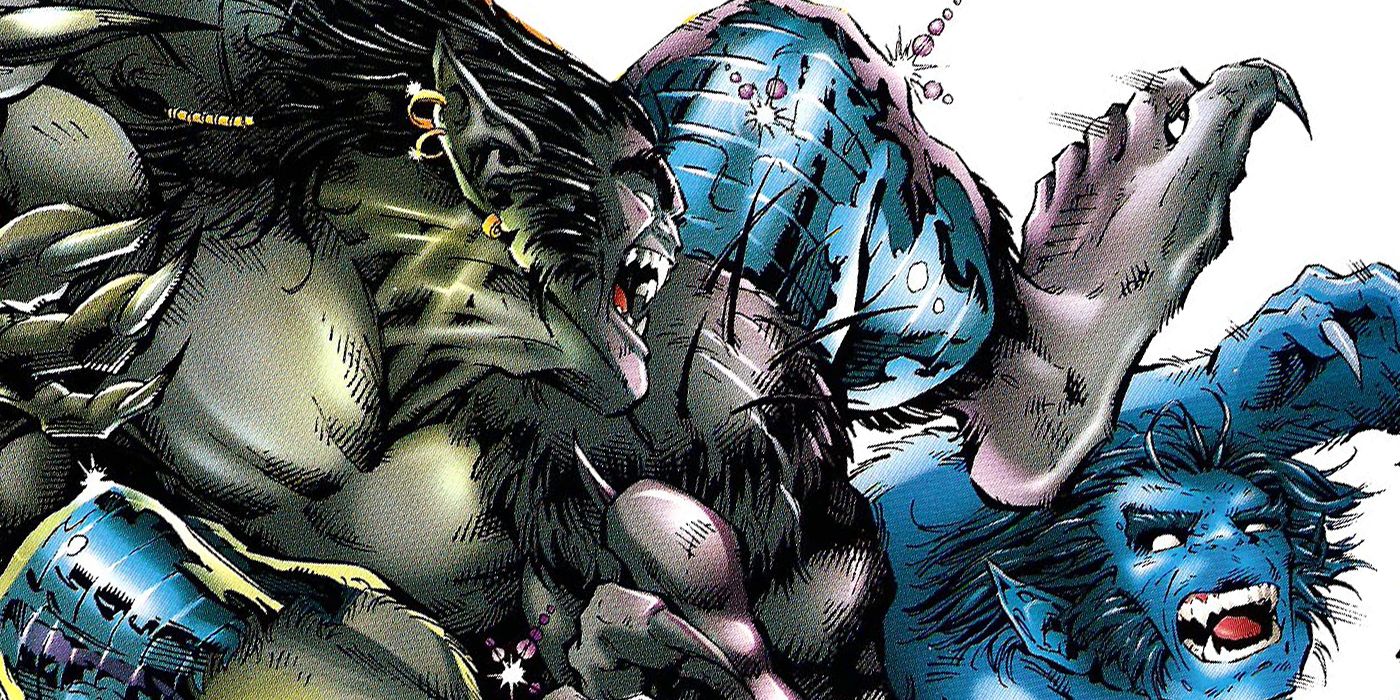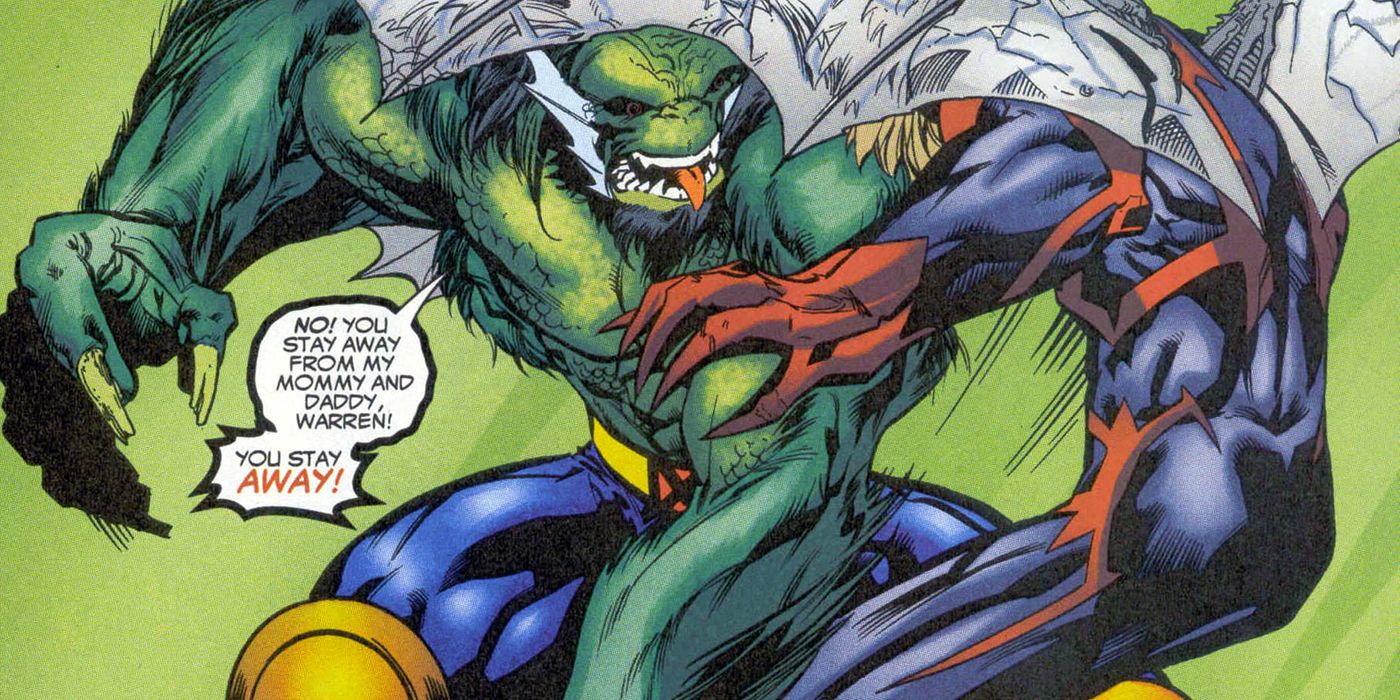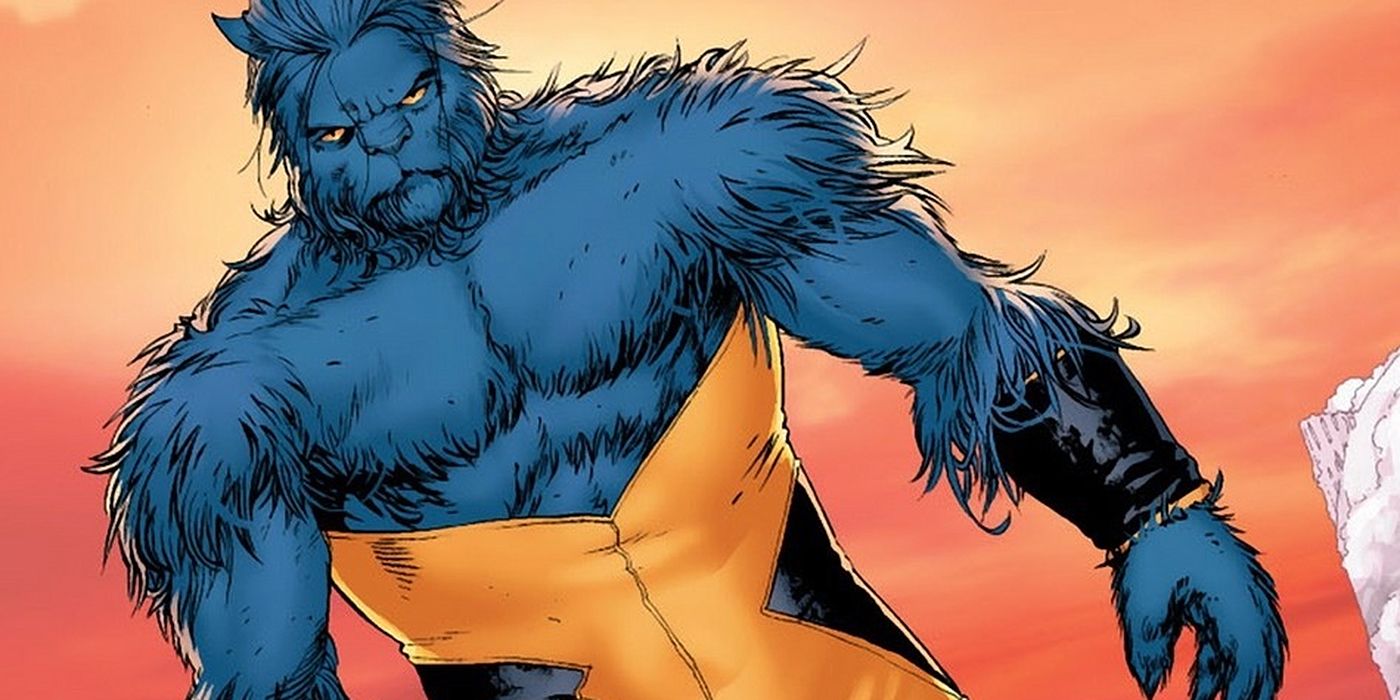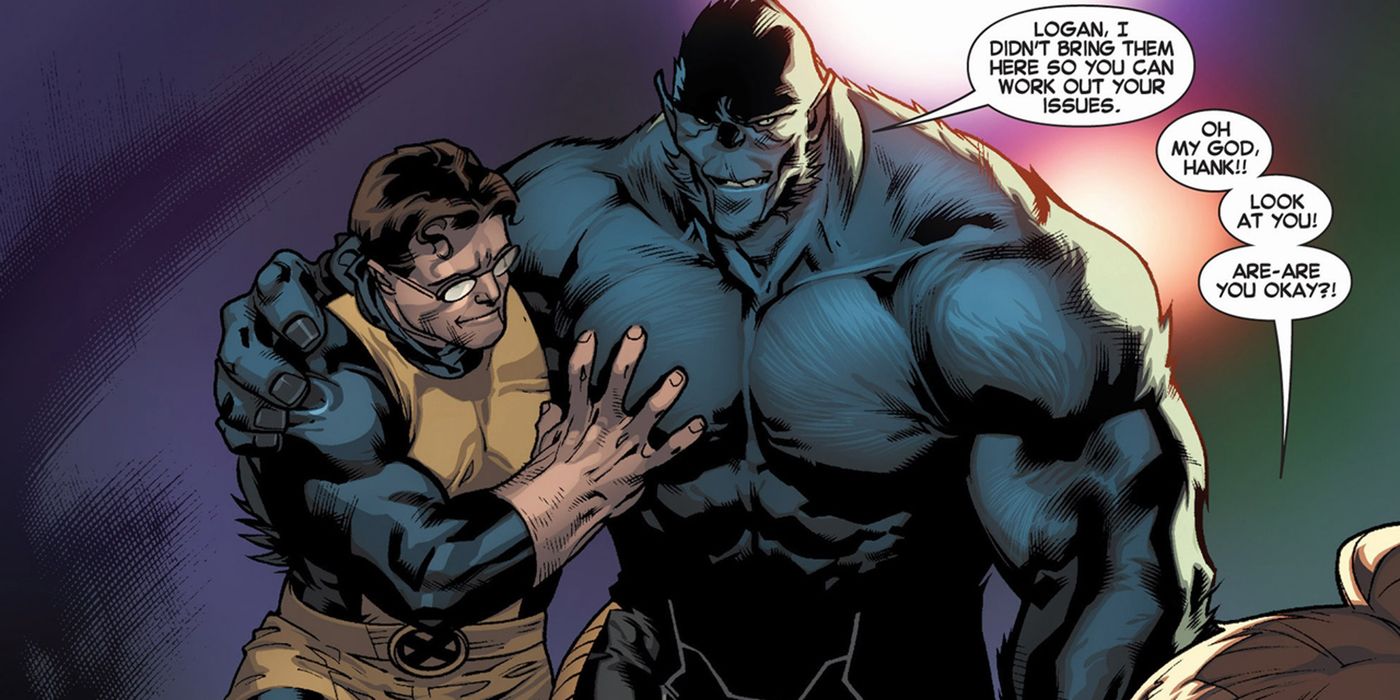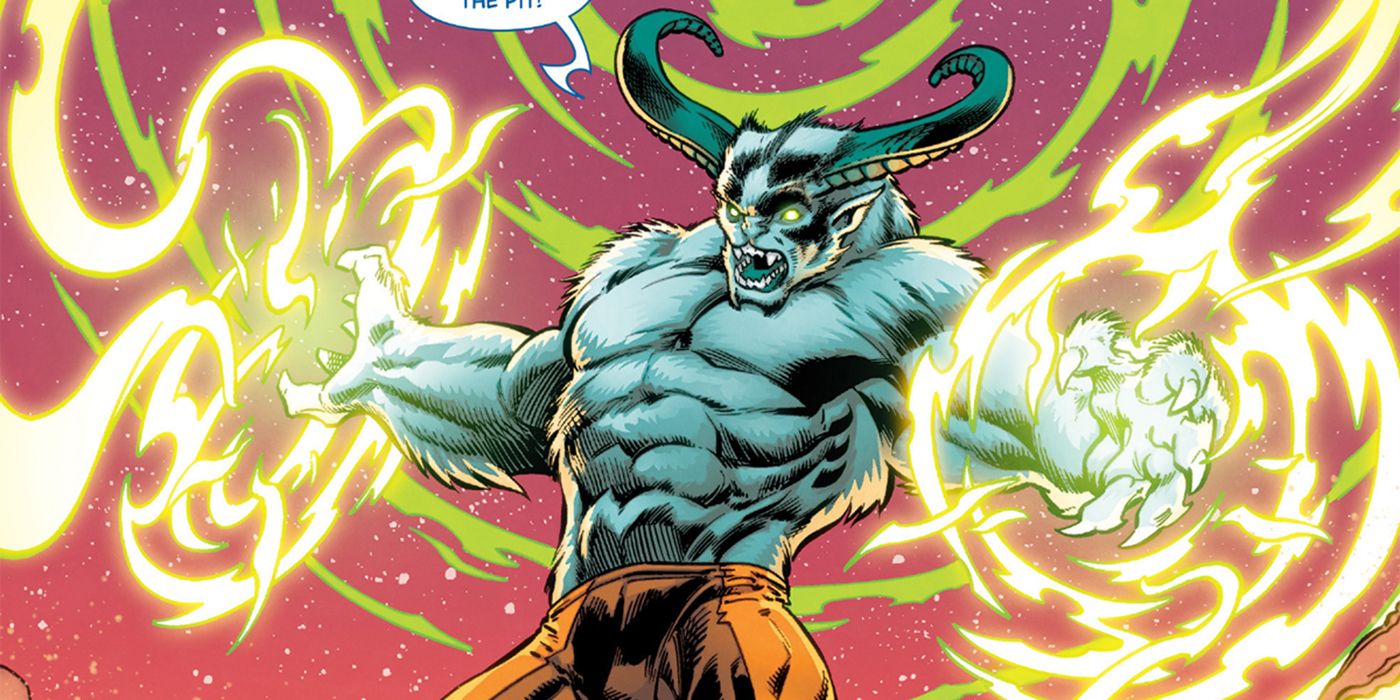SPOILER WARNING: This article contains spoilers for "All-New X-Men" #16, on sale now.
For one of the less showy mutants in the X-Men's expansive roster, Beast has reinvented himself more times than a dozen big name pop stars. One of the original five X-Men, Hank McCoy's brilliant mind and strong body have benefitted a number of superhero teams over the past 50 years, including the X-Men, Avengers, X-Factor and more. Beast's done all this superheroing sporting a number of different looks, but Beast doesn't just change his costume or suit of armor like his fellow X-Men and Avengers when he wants a new look. No, when Beast changes up his appearance, he literally changes his appearance -- body and all.
RELATED: Beast Becomes A [SPOILER] In All-New X-Men #16
Beast's grand tradition of reinvention hasn't stopped in recent years, either. His latest transformation occurred just this month in the pages of "All-New X-Men" #16 -- and it's a transformation unlike any we've seen the character undergo before. When it comes to extreme makeovers, Beast really is the best. To celebrate the latest in a long line of incarnations for the X-Men's resident genius, we've put together a history of Hank McCoy's mutant makeovers.
Human Beast
- Debut: "X-Men" #1, July 1963
When the X-Men first debuted way back in 1963, Beast's mutation solely included his oversized hands and feet and muscular, stocky frame. His physical prowess made him a high school football star, and he brought those skills to Professor Xavier's teen mutant team as the bounding Beast. But despite having a name that conjures up truly grotesque images of monsters and, well, beasts, Hank still looked human. He didn't have to hide angelic wings like Warren Worthington, and he wasn't required to wear protective glasses at all times like Scott Summers. Beast could easily pass as human if he so chose, just like Iceman and Jean Grey.
Hank went on many adventures with the X-Men in this original human form. This human version of Beast would would even return on a few occasions in a few different ways. Beast reverted to his human form for a brief stretch in the mid '80s when he served as a member of X-Factor. And as a sidenote to this entry, we'll pre-emptively point out that this Beast has also been given a second life thanks to the events of "All-New X-Men." That series launched in late 2012 with a storyline that saw the adult Beast travel back in time to the weeks after the X-Men debuted. The adult Beast brought the teen team -- including his teen self -- forward in time. And that team is still around today, although teen Beast has now undergone some changes of his own (more on that in a bit).
Gray Beast
- Debut: "Amazing Adventures" #11, January 1972
In 1972, the anthology series "Amazing Adventures" switched lead characters from the Inhumans and Black Widow to focus on the Beast. This marked the first time McCoy had had a leading role in a series since "X-Men" was canceled a little over a year prior. This new storyline established that Beast had left the X-Men and Xavier's School for a job in genetic research at the Brand Corporation. While there, Beast discovered that one of his co-workers had nefarious plans. In order to put a stop to them and keep his identity secret, Beast drank a chemical extract that mutated him into a gray, furry Beast. The extract did more than just give him a quick disguise, and this move would haunt Beast for decades.
This forever changed Hank's DNA, transforming him into the furry Beast fans know him as -- except he was gray. Yep, Beast was originally gray and furry. This Beast only lasted a short while, but he still fought a bunch of X-villains (Mastermind, the Blob, Unus the Untouchable, Quasimodo) while sporting gray fur. This wouldn't be the last time we would see a gray-furred Beast -- although it was the last time we would see an altruistic one. Gray Beasts would soon become synonymous with dangerous Beasts.
Blue Beast
- Debut: "Amazing Adventures" #15, September 1972
Just a few issues after turning gray, Beast notes that he's continuing to mutate -- and that his fur had turned black. This color change would soon become a point of confusion and miscommunication between artists, though, and Beast's black fur would become blue fur. That mistake would stick, and Beast has been blue ever since. All of this is because comic book colorists often use blue as a highlight color for black. This sometimes results in confusion and things intended to be black come across as blue because of the highlight color. That's definitely the case with Beast. The cover of "Amazing Adventures" #15 is itself a bit of a magic eye; do you see a blue Beast or a black Beast?
RELATED: X-Men Team History: Follow The Road To Blue & Gold
Either way, this version of Beast became the default version of the character for decades to come. Aside from a stretch from 1986 to 1988 when he was human again, Beast would remain in this mutated form for almost 30 years. This is the blue Beast that joined the Earth's Mightiest Heroes in 1975's "Avengers" #137, and this is the Beast that returned to his old mutant team in Jim Lee and Chris Claremont's "X-Men" #1 in 1991. If you came to know the X-Men via the '90s Fox cartoon, then this is most likely your Beast. Similarly, the versions of Beast played by Kelsey Grammer and Nicholas Hoult in the X-Men feature films bear the strongest resemblance to this Beast (albeit without the wing-tip haircut). When people think of Hank McCoy, odds are this is who they picture.
Dark Beast
- Debut: "X-Men: Alpha" #1, December 1994
While the blue furry Beast bounced his way through the X-Books in the '90s, another Beast made his debut in the Marvel Universe. The 1995 X-Men event "Age of Apocalypse" introduced a dark, alternate timeline for the mutant team -- one where Professor X died before he was able to recruit his first generation of students. Without Xavier's early guiding influence, Hank McCoy used his genius intellect for evil and transformed himself into a sadistic, gray and kinda spiky looking Dark Beast. This version of Hank was so evil that he served Apocalypse with glee -- and wore metallic pants!
When the "Age of Apocalypse" ended, Beast was one of four characters that survived and jumped over to the main Marvel U. Dark Beast laid low for a while, only coming out of hiding after discovering his do-gooder counterpart and the X-Men. Dark Beast made his evil move in January 1996's "X-Men Unlimited" #10. In that issue, the evil Beast kidnapped the X-Man Beast and took his place among the heroes for a brief period of time. To do this, Dark Beast had to dye his hair blue -- which isn't easy when your entire body is covered in hair. Dark Beast's ruse was eventually uncovered and the villain sulked back into the shadows, only reappearing a few times to annoy and torment the X-Men before dying in 2014's "Uncanny X-Men" #22.
Brute
- Debut: "Mutant X" #1, October 1998
This one's a bit different from all the other Beasts on this list, in that this Beast never interacted with the main Marvel Universe. This Beast existed in the parallel timeline established in the late '90s ongoing series "Mutant X." This time around, Beast continued to experiment on himself, thus shifting his fur color from blue to green and giving him amphibious skills in addition to his brute strength. Making matters even more beastly, demons further changed this Hank's physiology, giving him cloven hooves. All of those changes resulted in Brute losing Hank's genius intellect, making his new codename even more apt. Despite being a regular cast member of "Mutant X," Brute -- and the entire timeline depicted in that series -- hasn't been seen in over 15 years.
Cat Beast
- Debut: "New X-Men" #114, May 2001
Back to the regular Beast, Hank McCoy changed up his look one more time when Grant Morrison and Frank Quitely took over the X-Men. This latest evolution, though, wasn't brought on by Hank himself. Instead, the combination of a secondary mutation and a life-saving genetic jumpstart from his X-Men teammate Sage caused Beast's appearance to evolve further. Of course, Beast wasn't too keen on his new cat-like look. For one thing, the mutation caused him to lose a lot of his manual dexterity as his once nimble simian hands were downgraded into clumsy paws.
Beast eventually grew used to his new appearance, and so did fans. While the cat makeover was initially a shocking change to this classic character, Marvel kept Beast's catlike appearance around for over a decade. This is the Beast that was featured in Joss Whedon and John Cassaday's "Astonishing X-Men," and it's the Beast that enjoyed a second stint with the Avengers as part of Captain America's covert team in "Secret Avengers." Beast's hands even went back to their more humanoid shape, most likely as artists slowly altered the initial Frank Quitely cat design over this look's decade of use. Still, Beast's look wasn't done changing. There are still a few more entries left.
New Beast
- Debut: "All-New X-Men" #5, January 2013
The divisive "Avengers vs. X-Men" event concluded with a Phoenix-possessed Cyclops killing Professor X. That one action set Cyclops down an extreme road as he cut ties from most of his teammates and led his own group of revolutionary X-Men. This series of events led to Beast's return to the X-Men after a period of estrangement, and Beast's return started with a bang. Not only was Hank going through another gradual and painful mutation, he decided on a drastic course of action to try to shock some sense into his old teammate Cyclops.
Beast traveled back in time and brought the original teenage X-Men forward in time -- including a young, human version of himself. That happened just as Beast's mutation went critical, causing his body to change one more time. With the help of his teen self's intellect, Beast came out the other end of his mutation in a new form, one slightly more apelike than his classic form -- and without the distinctive haircut. This is the form that the adult Beast still has today.
Demon Beast
- Debut: "All-New X-Men" #16, December 2016
While adult Hank's form has been stable over the past four years, the teenage Hank's just got a shake up. After being brought forward in time, the teenage Hank was shocked by what happened to his adult self. He vowed to not go down the same path as the older Beast since he saw the danger of self-experimentation. Still, it might be Hank McCoy's destiny to mutate.
RELATED: Beast Becomes The Sorcerer Of Science In All-New X-Men #15
While teen Hank has steered clear of scientific experiments, he has recently taken to sorcery after a mission with Doctor Strange and began dabbling in the dark arts. This different kind of experimentation ultimately led Beast down the same road his adult self went down. In "All-New X-Men" #16, Beast meddled with a spell in order to stop an invading army of demons and save his friends. He partly did this because his own amateur magic show had made Earth vulnerable to demonic attack. The spell, which literally attached itself to Hank, unleashed a new, gray-furred demonic Beast, one packing plenty of magic power. Unlike other beast forms, though, Hank was reverted to his human form not long after unleashing this new beast mode.
Whether or not this is the last time we've seen this demon Beast remains unclear. Beast's thoughts at the end of the issue seem to indicate that the form will return in the future, although the Beast we've seen in the "X-Men Blue" promo art is human in form. How or if this new form will appear again remains a mystery. Perhaps for the first time ever, Hank will be able to alternate back and forth between his human form and a demonic Beast form?
The teenage Beast's storyline continues in the "Inhumans vs. X-Men" tie-in issue "All-New X-Men" #17, which arrives on January 18, 2017.

